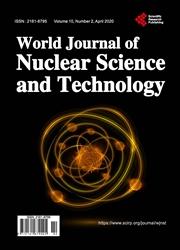Technological Perspectives for Propulsion on Nuclear Attack Submarines
引用次数: 0
Abstract
This work aimed at proposing a new combination of technologies to improve military performances and reduce costs of nuclear attack submarines, without overlooking safety constraints. The last generation of nuclear attack submarines increased size to meet safety and operational requirements, imposing huge burden on costs side, reducing fleet size. The limitations of current Technologies employed were qualitatively discussed, explaining their limitations. There are new technologies (plate and shell heat exchangers) and architectural choices, like passive safety, and segregation of safety and normal systems, which may lead to reduction of costs and size of submarines. A qualitative analysis was provided on this combination of technologies, stressing their commercial nature and maturity, which reduced risks. The qualitative analysis showed the strong and weak points of this proposal, which adopted the concept of strength in numbers. Concluding, new Technologies enabled the existence of 3800 t nuclear attack submarines with powerful propulsion systems and good acoustic discretion.核攻击潜艇推进技术展望
这项工作旨在提出一种新的技术组合,以提高军事性能并降低核攻击潜艇的成本,同时不忽视安全限制。上一代攻击型核潜艇为满足安全和操作要求而增加了尺寸,给成本方面带来了巨大负担,缩小了舰队规模。定性地讨论了现有技术的局限性,解释了它们的局限性。有新技术(板壳式热交换器)和建筑选择,如被动安全,安全和正常系统的隔离,这可能导致潜艇的成本和尺寸的减少。对这种技术组合进行了定性分析,强调其商业性质和成熟度,从而降低了风险。定性分析显示了该提案的优点和缺点,该提案采用了数量优势的概念。总之,新技术使3800吨核攻击潜艇的存在具有强大的推进系统和良好的声学判断力。
本文章由计算机程序翻译,如有差异,请以英文原文为准。
求助全文
约1分钟内获得全文
求助全文

 求助内容:
求助内容: 应助结果提醒方式:
应助结果提醒方式:


